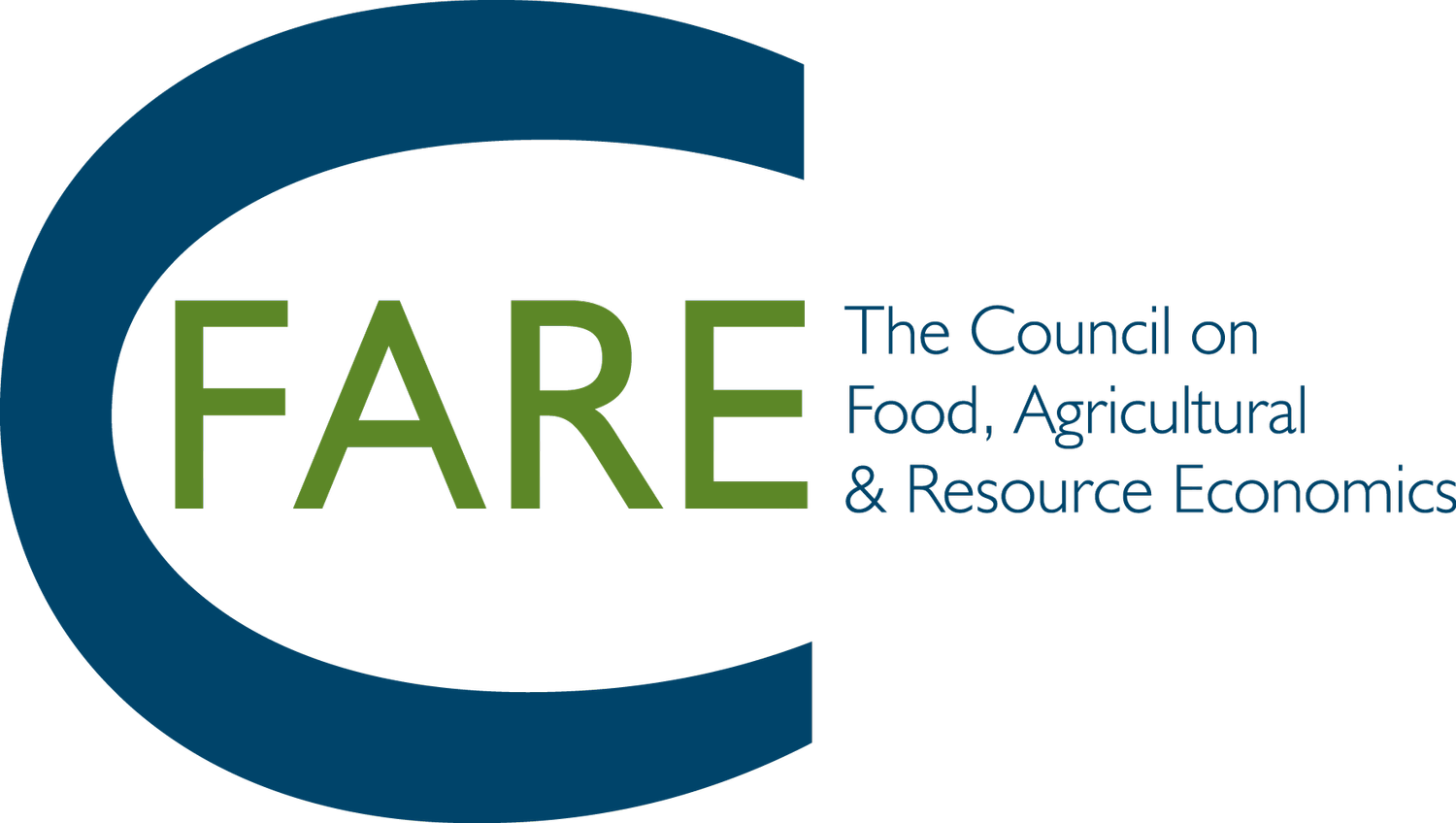Timely Topics in Regional Economic Development
The September C-FARE webinar highlighted award-winning research and Extension outreach on timely regional economic development issues. Presentations included an analysis of willingness to pay for broadband services, a study on the relationship between educational attainment and poverty across seven southern states, and results from the Economic Opportunity Mapping (EOM) Project, which enabled communities to explore county-level business opportunities across industries. Each of these projects received the George Goldman Award for Excellence in Regional Economic Development from the Community and Regional Economics Network of the Agricultural and Applied Economics Association.
Mckenzie Boyce – Willingness to Pay for Broadband Internet: A Case Study of Wisconsin
Mckenzie Boyce presented findings from a University of Wisconsin–Madison Extension study examining how much households across Wisconsin were willing to pay for broadband internet service. The project was initiated amid major federal and state investments in broadband infrastructure, including over $1 billion from the Broadband Equity, Access, and Development Program. Boyce explained that while expanding infrastructure was critical, affordability and adoption depended on whether households were willing and able to pay subscription costs. Using data from the 2022 Wisconsin Broadband Survey—a random sample mail survey with 700 respondents—the team conducted a discrete choice experiment to measure how much residents valued different broadband features, including speed, reliability, and price.
The study found that higher-income households were willing to pay more for faster and more reliable service, while lower-income households faced budget constraints that limited their willingness to pay. Respondents valued faster speeds but only up to a point, with demand leveling off beyond 200 megabits per second. Boyce concluded that while Wisconsin households were generally willing to pay more for broadband than previous studies suggested, affordability remained a key barrier to equitable adoption. She emphasized that communities should consider local income levels when planning broadband expansion and explore funding mechanisms to help close gaps in access and ensure all households can connect.
Anders Van Sandt – Mapping Economic Opportunity in Rural America
Anders Van Sandt of Colorado State University discussed findings from the Mapping Economic Opportunity in Rural America project, led by Dr. Craig Carpenter of Michigan State University. The project sought to provide rural leaders with better data and tools to guide local economic development decisions. Supported by the USDA’s Agricultural and Food Research Initiative, the interdisciplinary team used restricted-access datasets to analyze rural business patterns, identify industries best suited for small markets, and highlight opportunities for growth. Van Sandt explained that the team began with community listening sessions, conducted extensive research, and developed an interactive mapping tool that allowed users to explore county-level data on business density and performance across industries.
The project produced 11 academic papers and numerous outreach presentations, offering insights into business survival thresholds, the role of local banks, and the limitations of public data for rural policy decisions. Findings showed that industries such as grocery stores and gas stations could operate successfully in smaller markets, while hospitals and similar services required larger populations. Counties with more community banks exhibited stronger small business formation and resilience. The mapping tool helped communities identify which sectors were over- or underrepresented and informed local strategies for leveraging strengths and addressing gaps. Van Sandt concluded that federal investment in rural research not only generated practical tools and policy insights but also supported the next generation of researchers dedicated to building resilient rural economies.
Brian Whitacre – The Shifting Relationship Between Educational Attainment and Poverty
Brian Whitacre, Professor at Oklahoma State University, presented research examining how the relationship between education and poverty evolved across seven southern states—Alabama, Florida, Georgia, Louisiana, Mississippi, South Carolina, and Texas. The study, published in the Annals of Regional Science, analyzed census tract-level data from 2010–2014 and 2017–2021 to explore how changes in educational attainment affected poverty rates. Whitacre and his co-authors used spatial econometric techniques to measure local variations in this relationship, focusing particularly on associate’s and bachelor’s degrees. Their analysis revealed that, while overall poverty declined during this period, the role of associate’s degrees in reducing poverty weakened, while the influence of bachelor’s degrees became stronger and more geographically widespread.
Whitacre’s maps illustrated that in earlier years, associate’s degrees were significantly associated with lower poverty rates in many urban areas, such as Dallas, San Antonio, and Atlanta. However, by the later period, this relationship had diminished, suggesting a declining economic payoff for two-year degrees. In contrast, the effect of bachelor’s degrees strengthened, with more census tracts showing a clear link between higher educational attainment and lower poverty. The study also noted that the positive correlation between single motherhood and poverty decreased over time, potentially reflecting improved community support systems. Whitacre concluded that regional policies should emphasize expanding access to four-year degrees and strengthening university-industry partnerships to address local educational and economic development needs.
This program is supported in part by the Agricultural and Applied Economics Association and the US Department of Agriculture’s Economic Research Service, and the National Agricultural Statistics Service.
